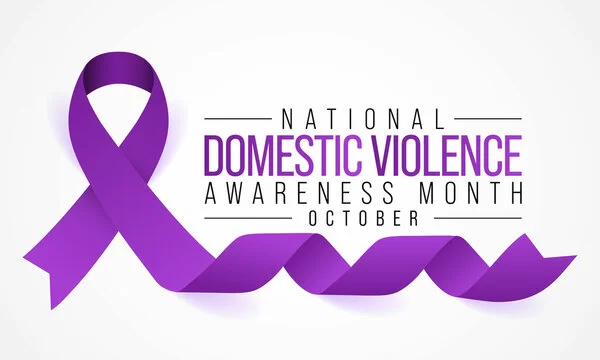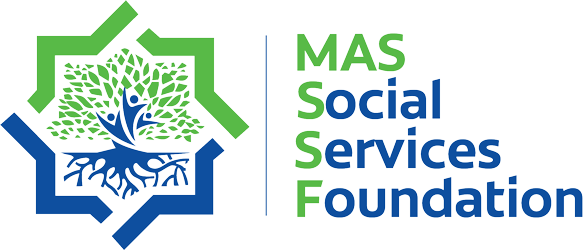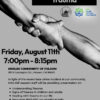
What is Domestic Violence?
This month we are taking a moment to acknowledge the survivors in our community who have experienced Domestic Violence and Abuse. Domestic Violence is never easy to talk about, especially in our communities, but it is vital that we talk openly about the abuse that can take place and how we can support and uplift our community members.
As uncomfortable as it may feel, we need to acknowledge the truth about how domestic violence is affecting our community members and the resources that are available for you or someone you may know who is in need of support.
As you may know, in response to the community’s need to have domestic violence resources, MAS-SSF collaborated with My Sisters House, ICNA Relief, Masjid Annur, and Al-Misbaah to open the first Muslim women’s shelter in Sacramento County that offers a variety of resources for women who are in need of a safe place as they identify the next steps to recovery and wellness in their lives.
We want to acknowledge a few things that often come up when discussing domestic violence. It is important to remember the following things whether you are a witness of abuse or have experienced abuse yourself.
- In no situation is it the victim’s fault that they are being hit, yelled at, having their belongings and money taken from them or any other form of abuse they may have experienced
- As adults and as Muslims, every person is accountable for their own actions. Regardless of the situation that resulted in the abuse, the abuser (the individual that hit, yelled, or inflicted any other form of abuse) is to be held accountable for the fact that they reacted in a way that caused harm to the survivor (partner/spouse, child, family member or anyone else in the home).
- Resources for survivors of domestic violence do not have a goal of separating families. The goal of domestic violence resources is to ensure that survivors of abuse who are in need of a safe place and a roof over their head are able to recover. Resources will support survivors to be able to identify goals toward living a good quality of life and regain entitlement to their rights as human beings.
- All resources for victims of abuse will always be confidential and the victim’s information will never be shared anywhere.
Although women are more likely to be victims of domestic violence, men can also experience these forms of abuse.
SACRAMENTO COUNTY DOMESTIC VIOLENCE COORDINATING COUNCIL ANNUAL DVDRT REPORT OCTOBER 2019 – October 2021
What are the different kinds of abuse, and what does it mean?
Physical Abuse:
“Physical Abuse can include anything from hitting, slapping, punching, kicking, burning, damaging personal property, refusing medical care and/or controlling medication, coercing partners into substance abuse, use of weapons.” (Women Against Abuse). It can also include withholding the ability to sleep or eat or using any removal of necessary items that affect the quality of the victim’s life.
Emotional Abuse:
“Psychological violence (also referred to as emotional or mental abuse) includes verbal and non-verbal communication used with the intent to harm another person mentally or emotionally, or to exert control over another person.
This includes, but is not limited to:
- expressive aggression (e.g., humiliating and degrading),
- coercive control (e.g., limiting access to things or people, and excessive monitoring of a person’s whereabouts or communications),
- threats of physical or sexual violence,
- control of reproductive or sexual health,
- and exploitation of a person’s vulnerability (e.g., immigration status or disability).
This not only leads to mental health problems, but also to severe physical problems, such as psychosomatic disorders” (Saferspaces)
Spiritual Trauma can also be included in emotional abuse and can include but is not limited to:
- Putting down your methods of practicing your faith
- Humiliating your faith
- Preventing the ability to practice faith
Financial Abuse:
“The forms of financial abuse may be subtle or overt but in general, include tactics to conceal information, limit the victim’s access to assets, or reduce accessibility to the family finances. Financial abuse – along with emotional, physical, and sexual abuse – includes behaviors to intentionally manipulate, intimidate, and threaten the victim in order to entrap that person in the relationship. In some cases, financial abuse is present throughout the relationship and in other cases financial abuse becomes present when the survivor is attempting to leave or has left the relationship.” (nnedv).
For more information, please visit the links below to learn more about different forms of abuse and be able to recognize red flags in your own relationships and to support others.
Resources for Domestic Violence :
- Amanah House: completely confidential services and shelter for women
- National Domestic Violence Hotline: 800-799-7233
References:
- https://www.womenagainstabuse.org/education-resources/learn-about-abuse/types-of-domestic-violence
- https://www.saferspaces.org.za/understand/entry/what-is-violence
- https://www.acesdv.org/domestic-violence-graphics/types-of-abuse/
- https://www.webmd.com/mental-health/signs-verbal-abuse
- https://nnedv.org/content/about-financial-abuse/







